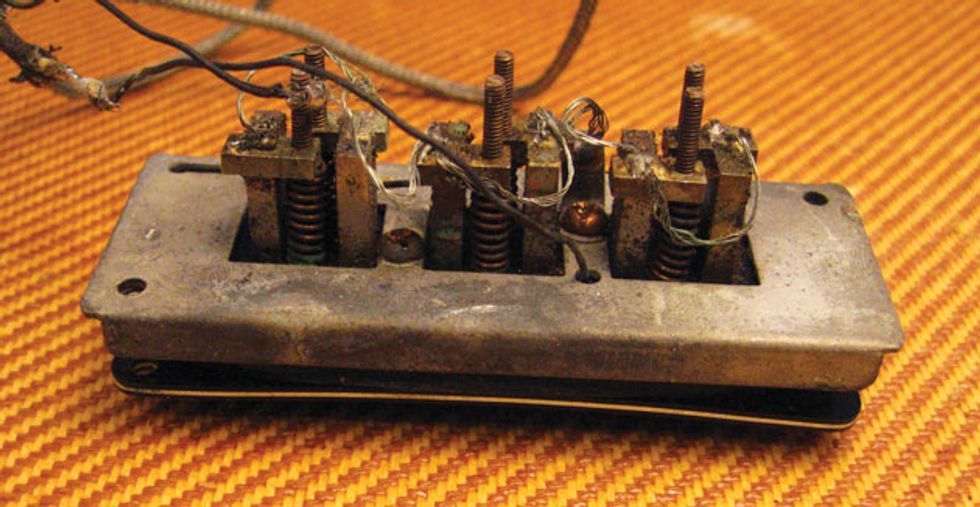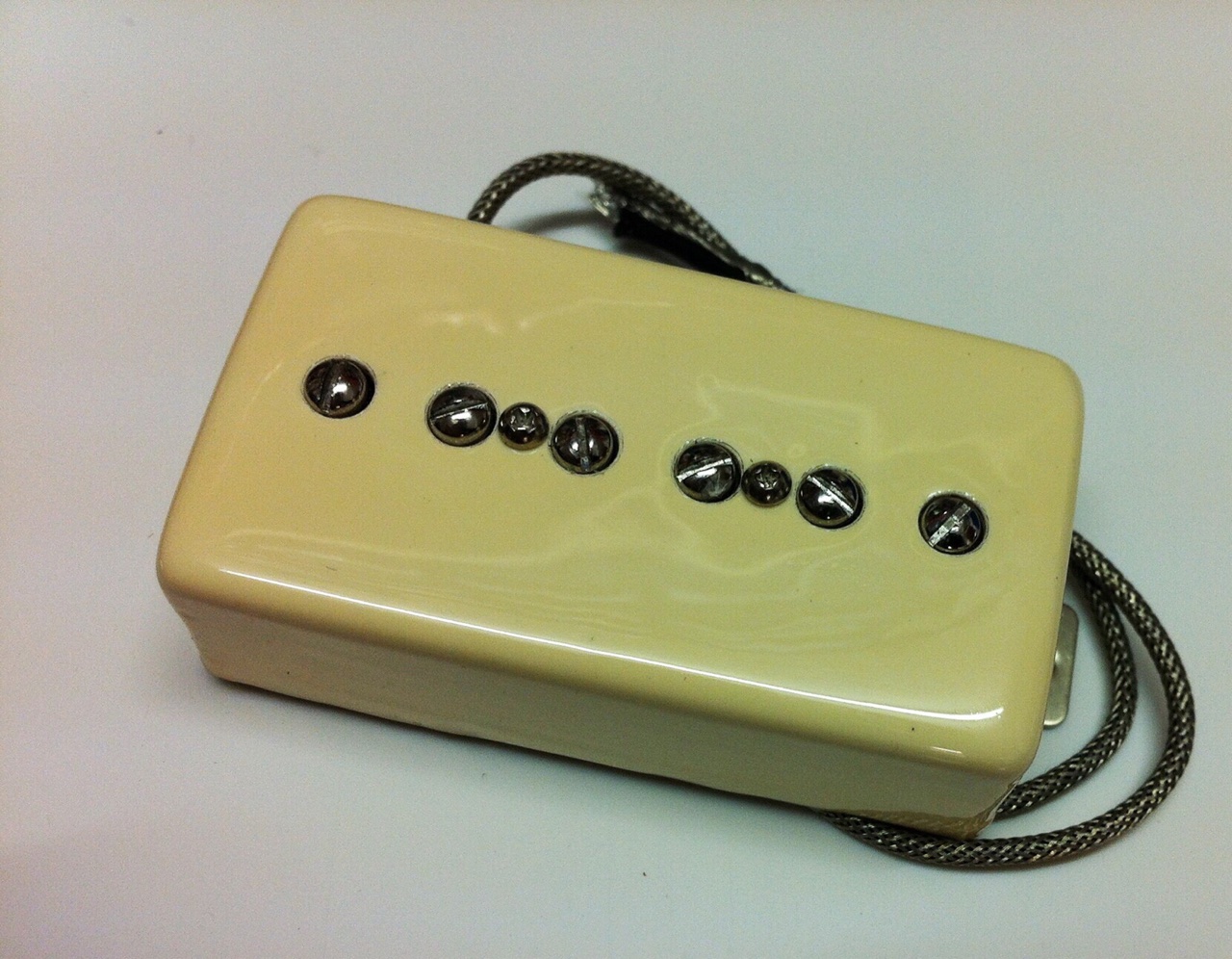Es gibt tatsächlich wohl viele Mißverständnisse, als auch viel Unbekanntes zum Thema P90 pickups. Wen es interessiert, hier ein wenig Info zum P90 aus dem Netz:
 Gibson Alnico V “Staple”
Gibson Alnico V “Staple”
Enter your vast, climate-controlled guitar closet and open the case housing your mint-condition 1954 Les Paul Custom in tuxedo-matching black. In the neck position you’ll see a Gibson Alnico V pickup, complimenting a P-90 pickup at the bridge. Developed by the late Seth Lover around 1952 or ’53, the Alnico V was a louder version of Gibson’s earlier single-coil, the P-90. While the era’s gold, maple-topped Les Pauls sported a pair of P-90s, the mellower, all-mahogany Custom benefitted from the brighter-sounding (and cool-looking) Alnico V.
(The pickup gets its name, of course, from the alloy of aluminum, nickel, and cobalt melded with iron to form the magnets in many guitar pickups. There are many alnico variations, each denoted by a number, though alnico 2 and 5 are most common in guitar pickups.)
Scotty Moore’s 1954 Gibson L5 CESN, purchased for $565 in 1955, came with Alnico V pickups in both the neck and bridge positions.
Gibson also installed Alnico Vs in their L-5 and Super 400 models, using a dog-eared version appropriate for archtop mounting. Gibson officially designates it the “480” pickup—the “staple” moniker comes from the appearance of its square magnets, chosen by Lover in a deliberate attempt to visually differentiate the pickup from DeArmond’s Model 200 pickup (later known as the Dynasonic). Cosmetics aside, the two pickups are very similar.
Seymour Duncan describes the Alnico V as having more output and clarity and a “tighter” tone relative to the P-90. Duncan also notes that it’s well suited for the relatively dark tone mahogany produces. The two models are quite different in construction: While a P-90 has bar magnets at its base and adjustable screws for pole pieces, the Alnico V’s square pole pieces are the magnets. Fine, old-school 1950s mechanical engineering resides within: In addition to offering a unique look, the square magnets allow space for six pole piece-adjustment screws. Like a DeArmond 200, the adjoining screws connect to an underlying spring mechanism, enabling individual pole piece height adjustment. The intricate yet effective design is evident when viewing the pickup from the bottom.
Compared to a Fender single-coil pickup, the Alnico V incorporates a flatter but wider bobbin with more windings, giving it higher DC resistance. Meanwhile, stronger magnets provide more output. A Strat pickup might have DC resistance of 6.3k with 40 to 50 gauss, while an Alnico V is around 8.6k with more than 50 gauss.
The Alnico V/Les Paul relationship was relatively short-lived—by 1957 Les Pauls featured Lover’s new humbuckers. But the Alnico V wasn’t quite extinct—it reappeared in the 1970s and again in the 2000s in reissues of the 1955 Les Paul Black Beauty. But these days, the Alnico V is chiefly a custom shop specialty.
A close relative to the Alnico V, according to Gibson master luthier Jim DeCola, is a P-90 that appeared in 1946 on the ES-125. That version used round magnets (probably alnico 2) for the pole pieces, not the steel adjusting screws typical of P-90s. (The 1946 P-90 wasn’t exactly the same—the larger rectangular cross-section of the Alnico V puts the magnets’ edges closer to the coil.) That 1946 cousin, now called the P-90S, is found on the new budget-conscious Les Paul Melody Maker.
Seymour Duncan makes a faithful Alnico V reproduction, though Duncan concurs that the pickup was originally conceived as a DeArmond clone—a fact confided by his longtime friend, Alnico V creator Seth Lover. That, says Curtis Novak, is why he doesn’t make an Alnico V reproduction. “People ask me why,” he says. “It’s because it’s essentially a Dynasonic.”



